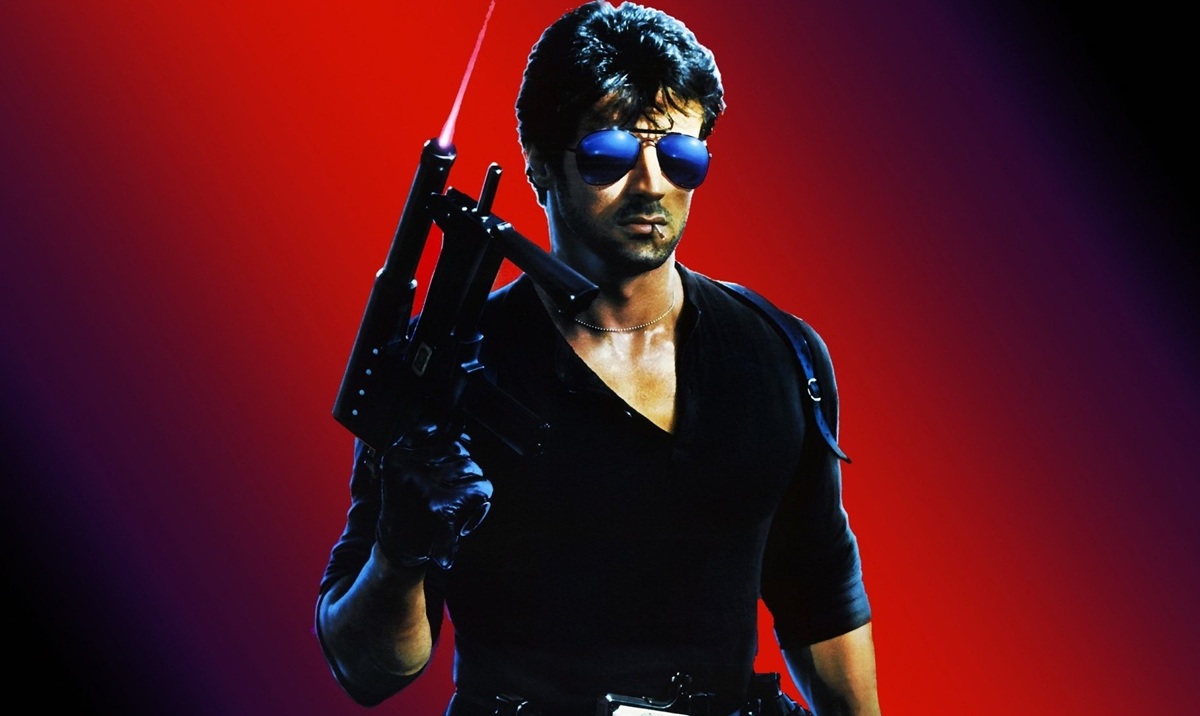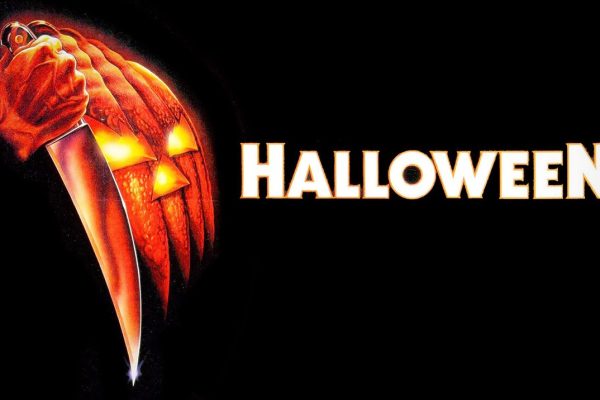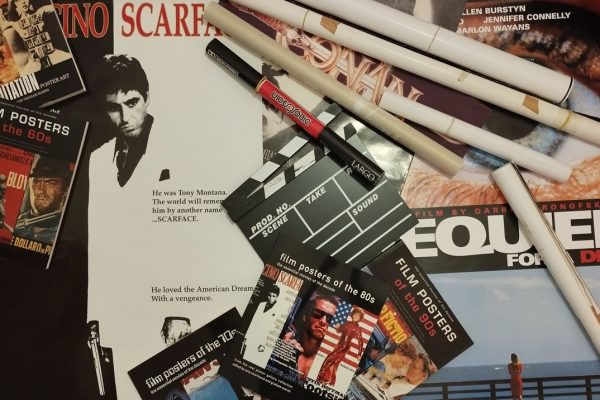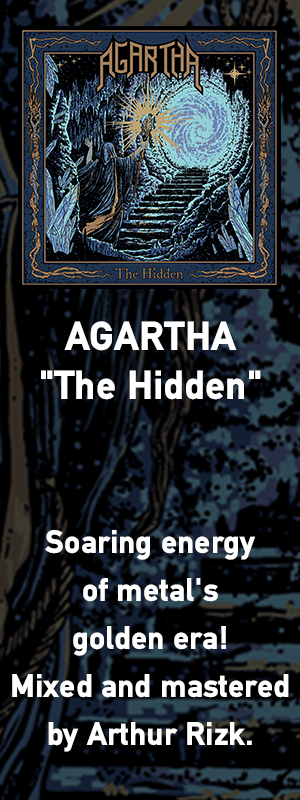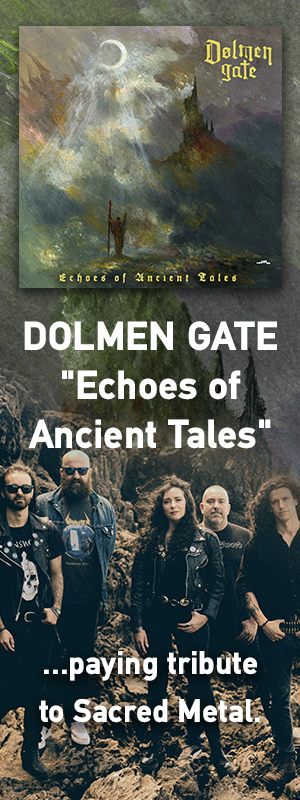ORIGINS AND INFLUENCE
The action (adventure) film met its highs as a genre during Ronald Reagan’s presidency in the American ’80s. There would be no other better place and time for all the Rambos, Cobras, Commandos, Terminators, Ninjas, Raiders, Super Cops and Callahans to win the fight against all the criminals, murderers, terrorists, and anti-American clichés. After all, the US President himself used Dirty Harry’s famous line from the Sudden Impact film, “Go ahead, make my day”, during the 1985 American Business Conference, when Reagan said, “I have only one thing to say to the tax increasers: Go ahead, make my day.”
Adventure films were part of the Classical Hollywood Cinema and you could find the element of adventure and action in many different films. It was part of war films, historical films, and gangster films that were very famous. Gangster films remained relevant during the New Hollywood years, and Bonnie and Clyde (1967) was one of the turning points of the new era, that continued with new filmmakers like Martin Scorsese and Francis Ford Coppola.
Before the ’80s, there was the Hong Kong action cinema and martial arts films. While there were many great films, it was Bruce Lee, the one who made the martial arts breakthrough in the West, with the films The Big Boss, Fist of Fury, The Way of the Dragon, The Game of Death, and Enter the Dragon, all of them released only from 1971-1973. Bruce Lee died in July 1973, aged 32, but his legacy was a huge influence on action cinema and he became a pop culture icon.
Before the ’80s, there were also the Western films, and while the genre’s golden age supposedly was from 1940 to 1960, in the ’60s and ’70s you also had films such as The Magnificent Seven, A Fistful of Dollars, For a Few Dollars More, The Good, the Bad and the Ugly, Once Upon a Time in the West, Hang ‘Em High, The Wild Bunch, and The Outlaw Josey Wales. During that period, the duo of Italian actors known as Terence Hill and Bud Spencer also appeared in films combining action and comedy, something that was also influential. However, two of the most iconic action actors of the ’70s were Charles Bronson and Clint Eastwood.
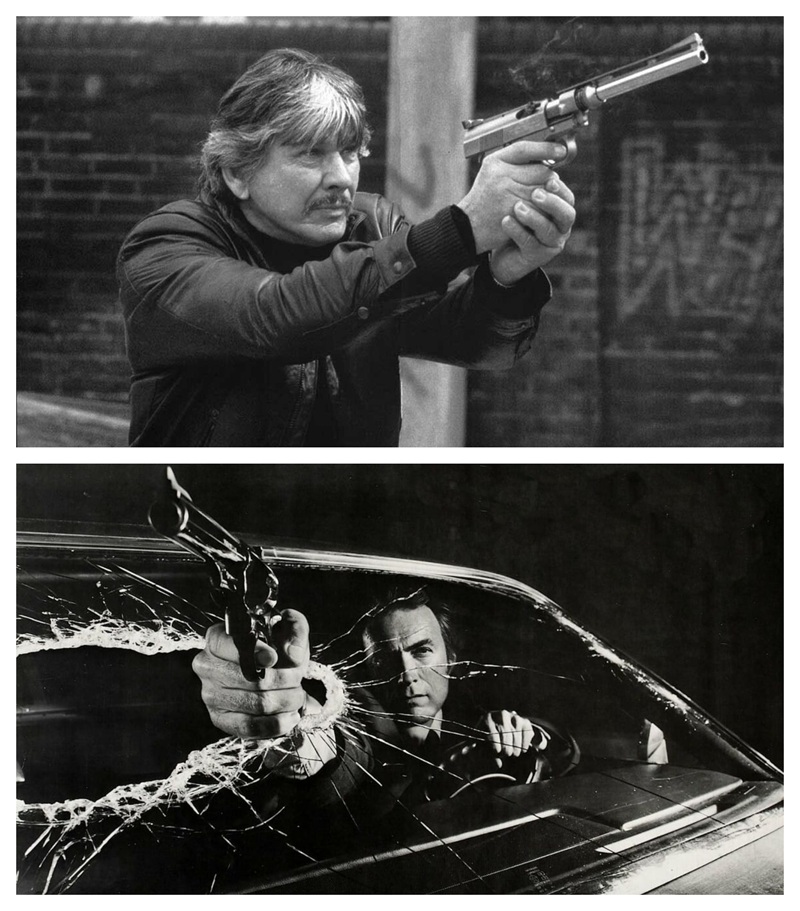
ACTION ICONS AND FORM
Charles Bronson started his acting career in the ’50s and up to the early ’70s, he appeared in Western, war and adventure films. He appeared in The Mechanic in 1972, and in 1974 he was in Mr. Majestyk, and Death Wish, an iconic vigilante action film which was heavily criticized upon its release for its subject. However, this was one of the best film series of the classic action film era, with Bronson reprising the same role in the Death Wish movies of 1982, 1985, and 1987, coming full circle with his final appearance in 1994 before his retirement. Among his other ’80s movies, Charles Bronson appeared in The Evil That Men Do, Murphy’s Law, Messenger of Death, and Kinjite: Forbidden Subjects, all of them directed by J. Lee Thompson.
Clint Eastwood made his breakthrough as the Man with No Name in Sergio Leone’s Dollars Western trilogy (A Fistful of Dollars 1964, For a Few Dollars More 1965, The Good, the Bad and the Ugly 1966), but his most iconic action role was in Dirty Harry (1971) as police inspector Harry Callahan. He was a new archetype character for the movies’ audience, a tough cop who didn’t follow rules and could easily take the law into his own hands and his own gun, the famous .44 Magnum. A few film critics described the film as “fascistic”, but the character of Inspector Callahan lived more, and the film series continued with Magnum Force (1973), The Enforcer (1976), Sudden Impact (1983), and The Dead Pool (1988). Escape from Alcatraz (1979), Firefox (1982), The Rookie (1990), In the Line of Fire (1993), and Absolute Power (1997) are some of the other action films Clint Eastwood also appeared in after Dirty Harry.
Just like Charles Bronson’s Paul Kersey character in the Death Wish films, Clint Eastwood’s Harry Callahan character also raised controversy and both introduced the anti-hero that would be more popular in the ’80s. The avenger, the man who takes the law in his hands or acts outside the law; an anti-hero that can have antisocial behaviour. Many action films in the ’80s were dominated by a right-wing fantasy where you could only fight violence with more violence. In a few words, many action films in the ’80s present immoral behaviour as justified and sympathetic, as opposed to the prototypical hero with moral attributes. However, defining morality in the characters of an action film might be a subject that needs deeper analysis.
Fights with fists, fights with guns, shooting, explosions, chasing, violence. The action films emerging from the ’80s had all those elements and mostly used generic storytelling based on the main characters and the action sequences. Stunt-people had a lot of work, the images were stronger than the script, and you only needed catchy and easy dialogues in most of the ’80s action films. The difference between a successful action film and the rest was the leading actor and its character, the director, and how realistic or over-the-top the action scenes looked. Of course, there were action films that were deeper (f.e. Runaway Train, To Live and Die in L.A.), but that wasn’t the rule, especially when masculinity entered the ’80s films, led by Sylvester Stallone and Arnold Schwarzenegger, the most iconic action actors of that era, performing characters that looked indestructible. It was then that the action film started to appear as a genre on its own, despite the fact that the adventure element had already been in American films for many years.
While Rocky (1976) was the first commercial success for Sylvester Stallone, it was the John Rambo character in the films First Blood (1982), Rambo: First Blood Part II (1985) and Rambo III (1988) that established him as an action icon, and the character of Lieutenant Marion Cobretti in Cobra (1986) was one of the most recognizable action roles of the ’80s, even if the film was influenced by Dirty Harry. Other Stallone action films in the ’80s were Nighthawks (1981), Lock Up (1989), Tango & Cash (1989). In the ’90s he appeared in Cliffhanger, The Specialist, Judge Dredd, and Assassins, and he reprised the role of Rambo in Rambo (2008) and Rambo: Last Blood (2019). And while he also performed in Escape Plan (2013) with Arnold Schwarzenegger, and Samaritan (2022), it was The Expendables franchise that brought back a glimpse of the classic American action films in the 2010s. Stallone directed The Expendables (2010). He was among the screenwriters for the first film and also The Expendables 2 (2012) and The Expendables 3 (2014), which was based on his story. In those film series, they gathered almost every known action actor from the ’80s and on, including Arnold Schwarzenegger, Dolph Lundgren, Jet Li, Bruce Willis, Chuck Norris, Jean-Claude Van Damme, Mel Gibson, Wesley Snipes, and many others, adding also actors of action b-movies, such as Eric Roberts and Robert Davi. The franchise also includes Jason Statham in every film, an actor that carries the flag of action films in modern times, keeping the aesthetics of the classic era of the ’80s and early ’90s.
Arnold Schwarzenegger was one of the most important figures in the history of bodybuilding, becoming Mr. Olympia for most years during the ’70s. His physics was one of the main reasons he got the leading role in Conan the Barbarian (1982), and just within a few years, he became one of the most important figures in action films, bringing the image of body-builders to action films. He was one of the most hard-working actors, an actor many directors loved to work with, and he appeared in Conan the Destroyer (1984), The Terminator (1984), Commando (1985), Raw Deal (1986), Predator (1987), The Running Man (1987), and Red Heat (1988). He continued in the ’90s with Total Recall (1990), Terminator 2: Judgment Day (1991), Last Action Hero (1993), True Lies (1994), Eraser (1996), End of Days (1999), and in the early ’00s with The 6th Day, Collateral Damage, and Terminator 3: Rise of the Machines. From 2003 to 2011, Arnold Schwarzenegger served as the Governor of California, so he didn’t have any leading roles and made his return to the big screen afterward with a variety of roles, including action films such as The Last Stand (2013), Escape Plan (2013), and Sabotage (2014).
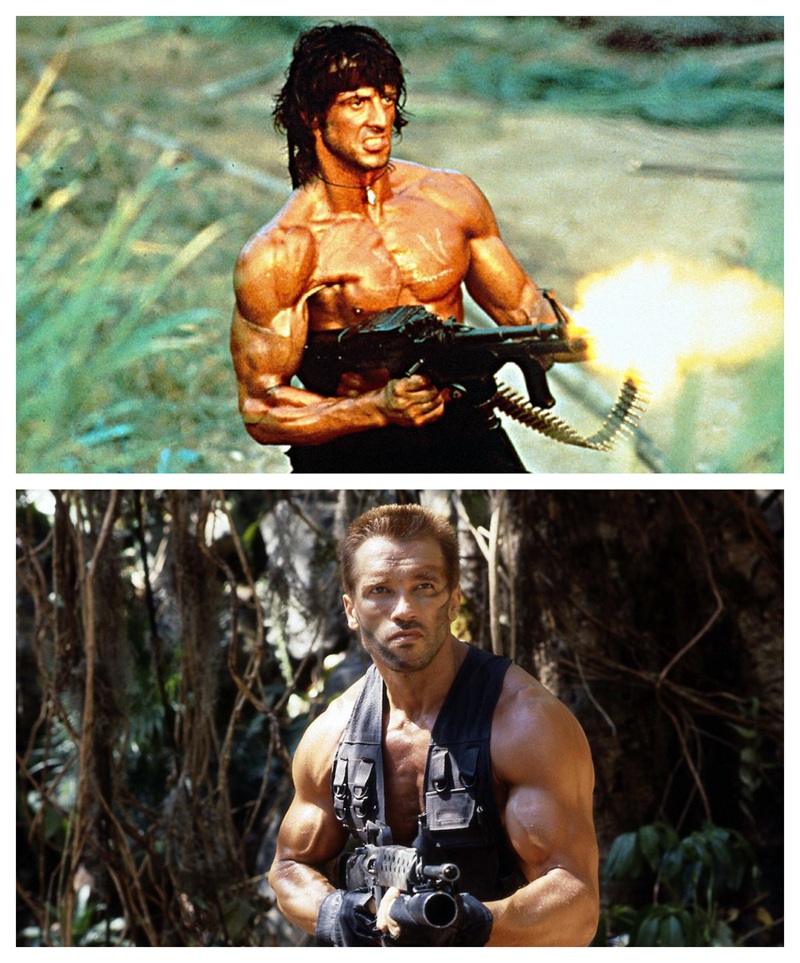
MORE ACTION ICONS
Chuck Norris is simply one of the most iconic ’80s action heroes with films like Silent Rage (1982), Forced Vengeance (1982), Lone Wolf McQuade (1983), Missing in Action (1984), Code of Silence (1985), Invasion U.S.A. (1985), and The Delta Force (1986).
Bruce Willis became known from the TV series Moonlighting (1985-1989), but it was the role of John McClane in Die Hard (1988) and Die Hard 2 (1990) that made him an action hero. He appeared in many films, including some major blockbusters, and his most notable action roles were in The Last Boy Scout (1991), Pulp Fiction (1994), Die Hard with a Vengeance (1995), The Jackal (1997), Mercury Rising (1998), Sin City (2005), Red (2010), Looper (2012), and Red 2 (2013). He appeared in many films from 2014 up to his retirement in 2022 because he had been diagnosed with aphasia.
Jean-Claude Van Damme was influenced by Bruce Lee, Charles Bronson and Sylvester Stallone, building characters that, more or less, were a combination of those actors. He was a martial arts expert, and he used it in his films, having an impressive action filmography until the late ’90s, with films such as Bloodsport (1988), Cyborg (1989), Lionheart (1990), Death Warrant (1990), Double Impact (1991), Universal Soldier (1992), Nowhere to Run (1993), Hard Target (1993), Timecop (1994), Sudden Death (1995), Maximum Risk (1996)
Steven Seagal, an aikido martial artist and action hero, was the leading actor in films such as Above the Law (1988), Hard to Kill (1990), Marked for Death (1990), Out for Justice (1991), Under Siege (1992), and The Glimmer Man (1996), but he met a huge demise after the ’00s, appearing in films mostly released direct-to-video, and he is also a very controversial person, accused of many cases of sexual harassment, among others.
BALANCING BETWEEN B-MOVIES AND MAINSTREAM SUCCESS
Action film is one of the best-known genres since the ’80s. Therefore, you can find it anywhere, from direct-to-video movies to blockbuster films and franchises. There were countless cult American ’80s films like Big Trouble in Little China (1986), Wanted: Dead or Alive (1986), Heat (1986), Malone (1987), Road House (1989), Johnny Handsome (1989), and Blind Fury (1989), but for every b-movies’ actors like Michael Dudikoff and Lorenzo Lamas, there can be icons like the adventurous archaeologist Indiana Jones performed by Harrison Ford in Raiders of the Lost Ark (1981), Indiana Jones and the Temple of Doom (1984), and Indiana Jones and the Last Crusade (1989), or the smuggler Jack Colton performed by Michael Douglas in Romancing the Stone (1984) and The Jewel of the Nile (1985), plus all those famous actors and their roles already mentioned.
Just like any genre, the action film was also combined with other genres and subgenres, so there were action comedies (Beverly Hills Cop), and a lot of fantasy and science fiction action films (Escape from New York, the Mad Max franchise, Aliens, Highlander, RoboCop). The action buddy movies were also famous, with films such as 48 Hrs. (1982) with Nick Nolte and Eddie Murphy, Tango & Cash (1989) with Sylvester Stallone and Kurt Russell, and the Lethal Weapon franchise with Mel Gibson and Danny Glover. In the ’80s, besides some martial arts films, there was a period where ninja films had a cult following, and you had movies like Enter the Ninja (1981), Revenge of the Ninja (1983), and American Ninja (1985). The martial arts films paved the way for more actors that followed in the years to come, like Marc Dacascos, Jet Li and Wesley Snipes. Meanwhile, while we focus on American cinema, the Hong Kong film industry has already started breaking through in the West.

THE DEMISE AND THE CHANGES
I have come to the conclusion that, despite the fact that the ’90s are chronologically a different decade than the ’80s, it also serves as the decade of changes and transformation in the popular forms of art like movies and music. With that said, until the changes complete something new or different, at the same time, you could have a continuation of the ’80s. So, in the ’90s, a few popular ’80s action figures kept their popularity or became bigger, but also many others were pushed into a deeper obscurity. While Hollywood cinema and American video presented all those movies, the Hong Kong action films became a strong influence that re-established a modern wave of action films through two cases during the ’90s.
The first one is the cinema of Quentin Tarantino. Tarantino never went to film school. He considered himself a student of cinema, and he believed that if you love movies enough, you can make a good one. He believed in good ideas and scripts with dialogues no one had ever seen before, but at the same time, he also believed that violence is one of the most fun things to watch. “Sure, Kill Bill is a violent movie. But it’s a Tarantino movie. You don’t go to see Metallica and ask the fuckers to turn the music down”, he once said. Tarantino’s films don’t hide their influence from John Woo and Ringo Lam’s heroic bloodshed and stylized action sequences, wuxia films, and spaghetti westerns.
The second case is The Matrix (1999) film with its special effects and action sequences that were heavily inspired by Hong Kong cinema and directors like John Woo. The Matrix franchise was a huge influence for the modern action films, establishing the science fiction action hybrid and a new visual era. So the ’90s, while keeping the action film philosophy of the ’80s in many cases, was also a period of change and transformation, leading to a new era where the movies of actors like Chuck Norris became outdated for the new generation of viewers. Masculinity didn’t matter anymore, and the audience also needed deeper characters, more interesting stories and modern action sequences. They didn’t need just an action film, they needed a better, modern action film. All the ’80s Commandos, Ninjas, and Callahans became old news, while iconic action actors like Jean-Claude Van Damme and Steven Seagal met their ultimate demise. This change didn’t come only because cinema is different. It came because society also changes and if you see many of those ’80s films outside the context of their era with the present eye, many of them didn’t age well. But that’s a different story and perspective.
THE NEW ERA
The new era of action films is dominated by film franchises, and often the action has changed from humans to superheroes (Marvel and DC movies and blockbusters), monsters (MonsterVerse and Kaiju films), even Transformers. The typical action films have partially changed to hybrids, like fantasy action films, horror action films, post-apocalyptic action films, and mainly superhero action films and science fiction action films, while there are actors that weren’t known as action film figures, but performed in successful, modern action films, like Keanu Reeves, Matt Damon, and Denzel Washington.
Keanu Reeves made his first action breakthrough with Speed (1994) and he previously appeared against Patrick Swayze in Point Break (1991). Starting with The Matrix films, he became a modern action icon with the John Wick franchise. His physics are nowhere close to the action figures of the ’80s, but his John Wick character is nearly invincible, offering over-the-top action with lengthy and extreme action sequences that ’80s films didn’t have. Matt Damon nailed the character of Jason Bourne in the franchise of The Bourne Identity (2002), The Bourne Supremacy (2004), The Bourne Ultimatum (2007), and Jason Bourne (2016), well-written movies with many action scenes, and excellent supporting actors – just like many modern films – something that was also very rare in this extent to the ’80s action films. Denzel Washington was fantastic in The Book of Eli (2010) and among other action films, he is also a part of another action franchise, The Equalizer.
The new era action films had countless superhero blockbuster movies, The Matrix franchise, the Underworld franchise, the Mission: Impossible franchise, the Fast & Furious franchise, and the modern films of the James Bond franchise with Daniel Craig in the role of 007, just to mention a few. The major studios seem to want to keep the modern action figures and stories as long as possible and establish films in a continuation, or expand their cinematic universe and timeline. At the same time, they produce many films that are remakes, faithful or loosely based on older films and stories. What Hollywood also did was not just inspired by Hong Kong action cinema, but they also brought to Hollywood filmmakers and actors they were inspired by, like the director John Woo who filmed American movies like Face/Off (1997) and Mission: Impossible 2 (2000), or the actor Chow Yun-fat who appeared in The Replacement Killers (1998).
Still, though, there are a handful of actors influenced by the masculinity of Sylvester Stallone and Arnold Schwarzenegger, like Vin Diesel and his characters Dominic Toretto (Fast & Furious franchise), Riddick (The Chronicles of Riddick franchise), Xander Cage (XXX franchise), and also films such as Babylon A.D. and Bloodshot. On the other hand, there are also cases like Liam Neeson. The 2010s mark the transformation of Liam Neeson into a new action icon with the Taken franchise, and many more films, including Unknown, Non-Stop, Run All Night, and A Walk Among the Tombstones. Meanwhile, one of the most famous actors in the history of cinema also became a modern action icon: Tom Cruise. Besides the Mission: Impossible franchise, Tom Cruise has also appeared in many successful and blockbuster action films, like Minority Report (2002), Collateral (2004), Jack Reacher (2012), Oblivion (2013), Edge of Tomorrow (2014), and Jack Reacher: Never Go Back (2016). Gerald Butler appears in a few action films, including the Death Wish-inspired Law Abiding Citizen (2009), Den of Thieves (2018), Plane (2023) and the Has Fallen franchise, while David Cronenberg’s A History of Violence (2005) and Eastern Promises (2007), both with actor Viggo Mortensen, are among the best films of the ’00s. Other excellent modern action films are Equilibrium (2002), Machete (2010), Hanna (2011), Snowpiercer (2013), Sicario (2015), The Accountant (2016), Hotel Artemis (2018), Extraction (2020), Sisu (2022), and The Killer (2023). In most cases, many modern action films like them, include a diverse cast, complicated characters and stylized or extreme action sequences.
In the new era, you also have more female characters in leading action roles than in the ’80s and ’90s, where you had the rare case of Sigourney Weaver (Aliens) and Geena Davis (The Long Kiss Goodnight) in mainstream films, or Cynthia Rothrock in b-movies. In the new era you also have action films with Angelina Jolie, Charlize Theron, Scarlett Johansson, Uma Thurman, Kate Beckinsale, and many more.
What connects the modern era with the ’80s action films is Jason Statham. Probably the only modern action actor with ’80s aesthetics and a continuation which is mainly connected to action and adventure films, but besides franchises like The Expendables, Fast & Furious, and Transporter, he also appears in many single action films, like many similar actors of the ’80s and ’90s.
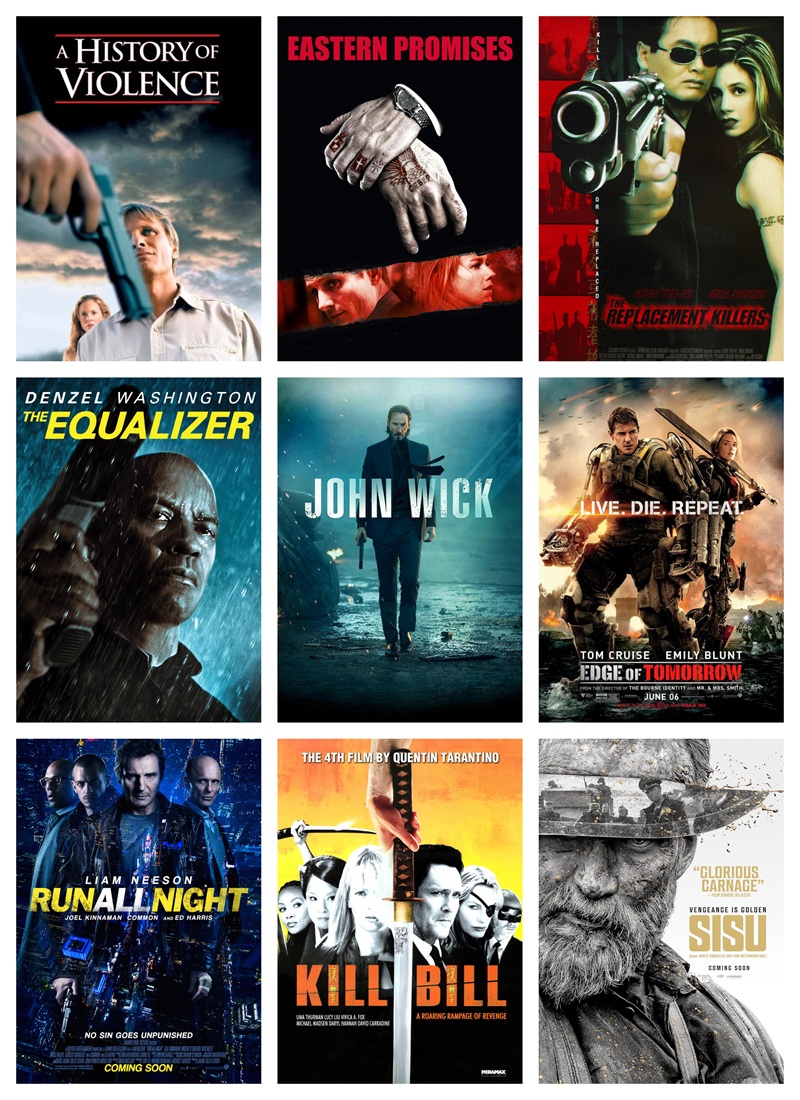
THE FUTURE
It is uncertain. With the demise of the ’80s action hero, also came the demise of the b-movies, which were largely part of the genre and were strongly connected with the VHS era, which was replaced by DVD and now by movie streaming services. Every change and transformation cuts a piece of the past, so after so many years, things have changed so much that you can’t predict the future, because the more time passes, the quicker the changes are.


